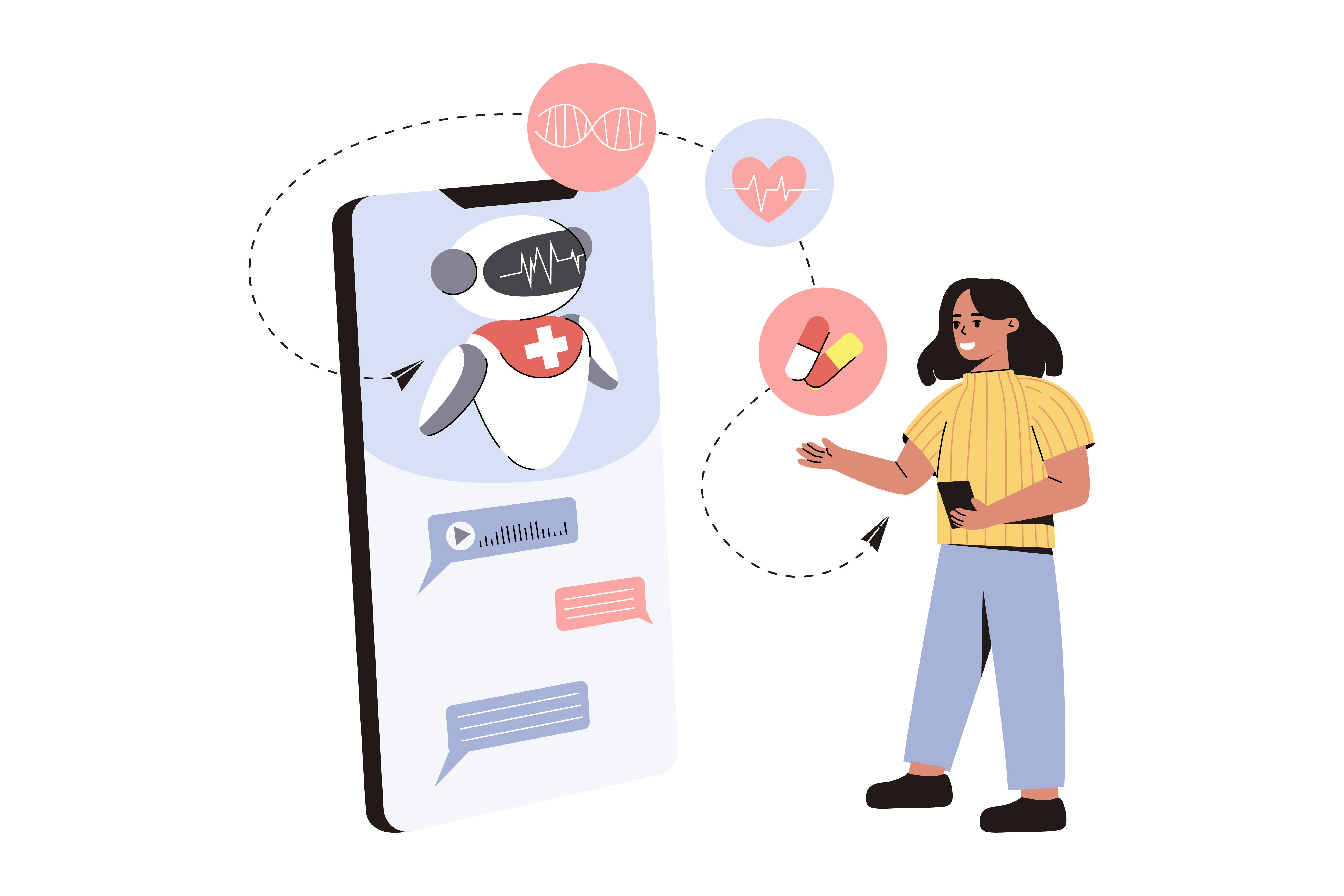AI chatbots in telemedicine are changing how people access healthcare. Virtual healthcare providers are now using chatbots to improve access, reduce wait times, and enhance patient engagement. For digital health apps and medical apps, these tools are becoming essential for quality, cost efficiency, and better care.

What Chatbots Do in Telemedicine
Chatbots for medical apps are more than simple Q&A bots. They help in many ways throughout the patient journey:
Symptom assessment and triage: Before patients even see a doctor, chatbots can ask questions about symptoms, help assess urgency, and guide users to the right care pathway. This reduces delays and makes sure that serious issues get fast attention.
Appointment scheduling and reminders: Chatbots manage bookings, send reminders, reschedule if needed. These tasks reduce missed appointments and ease administrative work.
Previsit preparation and postcare follow up: Before the virtual visit, a chatbot may collect medical history, ask about recent changes, or offer instructions. After the visit, they can send summaries and reminders for medications or next steps.
Patient engagement and education: Chatbots deliver tailored education content, answer common questions, give health tips, help manage chronic conditions, and deliver follow up messages. This helps patients feel more involved in their own care.
Benefits for Clinics and Patients
There are major wins when virtual clinics use well trained AI chatbots:
Accessibility around the clock: Patients can get answers or support any time of day, even outside clinic hours. This is especially helpful for urgent questions or in remote areas.
Reduced administrative burden: Staff spend less time managing appointment scheduling, paperwork, and repetitive questions. This frees up resources for more complex care.
Improved adherence and outcomes: When patients get reminders for medications, follow up check ins after visits, or educational materials, they are more likely to follow care plans. That lowers complication rates and improves patient satisfaction.
Cost savings: With fewer no shows, more automated workflows, and less staffing needed for routine tasks, clinics reduce costs and improve efficiency.
Training Your Chatbot For Better Replies
To get the most out of AI in virtual healthcare, your chatbot must be trained well:
- Use accurate medical knowledge: Incorporate vetted medical guidelines and expert reviewed content so replies are safe.
- Design for empathy and clarity: Patients are often stressed when using telemedicine. Replies should be simple, reassuring, and avoid jargon.
- Enable escalation paths: When queries are complex or sensitive, the chatbot should escalate to a human provider.
- Collect feedback from real users: Use patient feedback to refine responses, catch misunderstandings, and adjust tone.
- Ensure data security and privacy: Medical data is sensitive. Encrypt data, comply with local laws, and make sure patient trust is preserved.
Thinking about cutting operational costs through smarter workflows and automation tools in your clinic or virtual service? Our article on How Automation Tools Can Cut Down Your Operational Costs shows how automation and AI can reduce costs while maintaining or improving quality.
AI chatbots in telemedicine offer a future where virtual clinics are more efficient, more accessible, and more patient centered. By training your chatbot well, using it to manage both routine and complex tasks, and keeping patient experience as a priority, you can transform your patient support and care delivery in 2025.
Heading 2
Heading 3
Heading 4
Heading 5
Heading 6
Lorem ipsum dolor sit amet, consectetur adipiscing elit, sed do eiusmod tempor incididunt ut labore et dolore magna aliqua. Ut enim ad minim veniam, quis nostrud exercitation ullamco laboris nisi ut aliquip ex ea commodo consequat. Duis aute irure dolor in reprehenderit in voluptate velit esse cillum dolore eu fugiat nulla pariatur.
Block quote
Ordered list
- Item 1
- Item 2
- Item 3
Unordered list
- Item A
- Item B
- Item C
Bold text
Emphasis
Superscript
Subscript






.png)


.svg)







